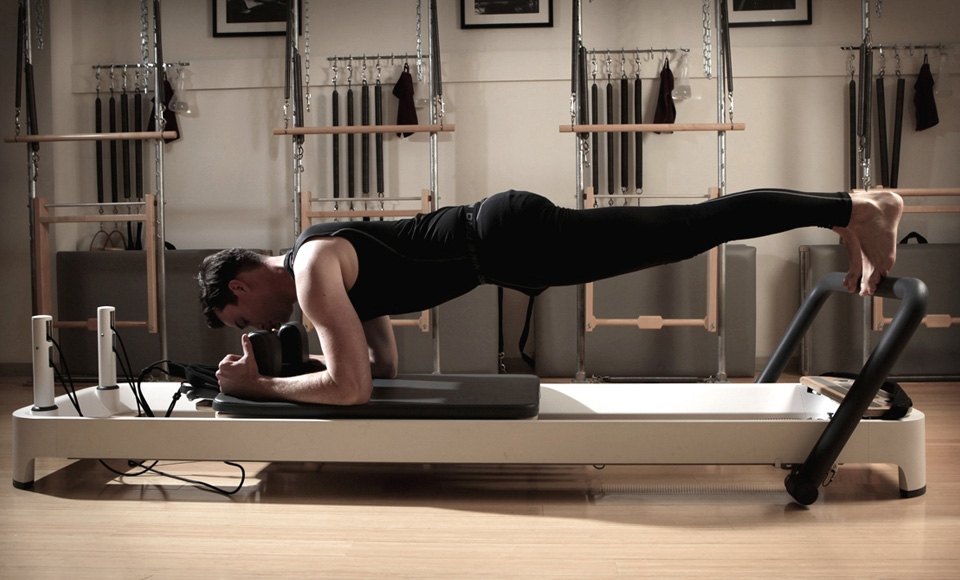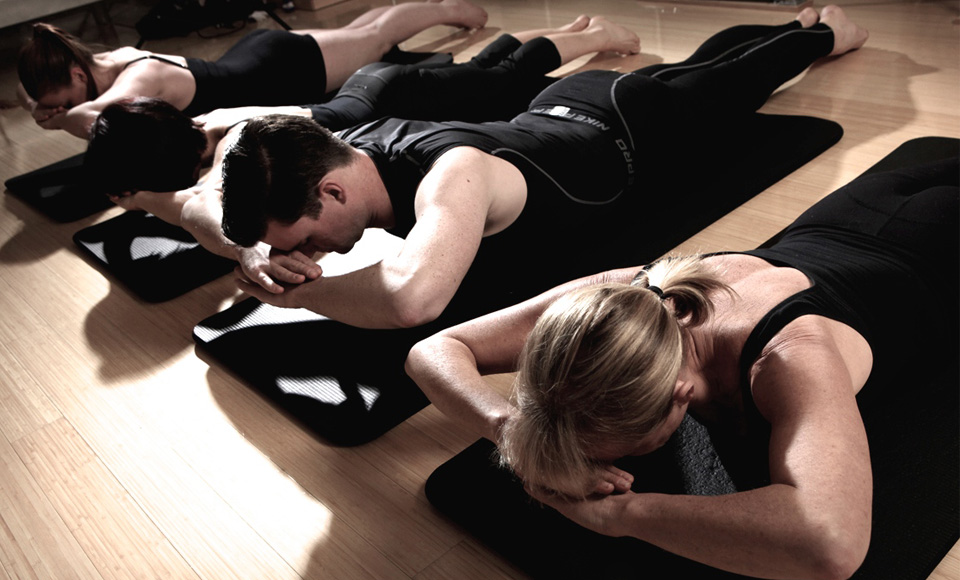Course Competency Criteria
PAA Course Competency Criteria (CCC) allows for the alignment of industry training programs and guides the PAA committee in its approval of these training programs.
Additionally, training providers may utilise the criteria to identify gaps and align training programs with PAA membership access. The general public may also refer to course competency criteria to identify an appropriate standard when choosing a training provider.
Course competency criteria assist the PAA to maintain the highest standard of Pilates education in Australasia.
The PAA course competency criteria were developed through industry consultation and recognition of current industry guidelines for competency-based training in the Vocational Education and Training sectors.
Open > PAA Course Competency Criteria for Professional (Accredited) Courses
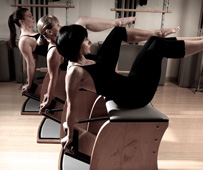
Providers and faculty
Course providers and faculty
PAA approved Professional courses must be VET accredited, delivered through a registered training organization (RTO), and provide graduates with a minimum AQF diploma qualification. PAA approved VET accredited courses must cover the skills and knowledge required to programme, instruct and modify a Pilates class in a studio setting (all apparatus and mat) for up to 4 clients, within national protocols and guidelines.
The course must equip graduates to teach classes in a studio environment catering to a limited general public with apparently healthy bodies and clients with specific musculoskeletal or pathological issues and conditions. E.g., lordosis, kyphosis, head forward, LBP, neck issues/shoulder/knee issues.
- The course must be delivered in part and guided by a Principal Trainer or appropriate faculty tutors of a recognised training organisation.
- The course director or principal tutor must be a PAA Practitioner Member – Principal Trainer or equivalent.
- Faculty tutors must be PAA Practitioner Member – Trainer Level 1 or equivalent.
- Course providers should be able to demonstrate a lineage to Joseph & Clara Pilates’ specific works.
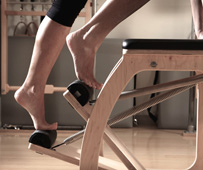
Timeframe and hours
Course timeframe and minimum hours
- Course entry requires a pre-requisite of 25 hours of Pilates experience in any format.
- The timeframe for course delivery is a minimum of 24 weeks and a minimum of 500 total course hours allocated as follows:
- Face-to-face and online delivery of theory/content – minimum of 120 hours combined.
- Work experience – minimum of 300 hours of observation and assistant teaching combined. Minimum 50% of work experience must be assistant teaching at an approved studio.
- Self-mastery – minimum of 80 hours. 50% of these hours need to be classes with a PAA Practitioner member, Level 2 or above (or equivalent).
- All course hours (observation, self-mastery and work experience) to be logged by student with details of experience/exercises covered. Must be signed off by faculty member.
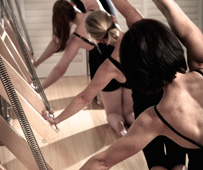
Course Content
Course content
The course submission must show evidence that the course delivers and facilitates the knowledge, understanding and performance (where relevant) of the following:
- History and development of the Pilates Method
- Philosophy, concepts and principles of the Pilates Method and how the mat or reformer fits within the total system of the Pilates Method.
- Knowledge, instruction and performance of Pilates repertoire on all apparatus and mat, to full Intermediate level.
- Applied anatomy & physiology
- Movement analysis, including basic biomechanics and a knowledge of common movement dysfunctions, postural concerns and corrections
- Knowledge of common injuries and pain syndromes e.g. joint strains and sprains, lower back pain, knee, shoulder pain
- Pre-exercise clearance of clients to determine suitability for Pilates classes, with provision of appropriate industry standard screening templates.
- Initial assessment process, including recording of pre-existing condition, postural assessment, identification of faulty postures and postural correction with provision of appropriate industry standard templates.
- Teaching methodology and programming for full studio classes using all large and small apparatus as well as common props, and catering for a wide range of body types. Must include knowledge of appropriate modifications and contra-indications for common postural conditions and pain syndromes.
- Study of special populations and appropriate application of the repertoire to these populations
- Assessment and progression tools to review and analyse ongoing client condition, progress, and goals. Must include provision of industry standard templates for recording individual client sessions (e.g., SOAP notes) and protocols for scheduling of ongoing assessments.
- Use, maintenance and safety protocols of all Pilates apparatus /props
- Workplace health and safety (government accredited unit or equivalent)
- Understanding of PAA scope of practice for Pilates Practitioner level instructors
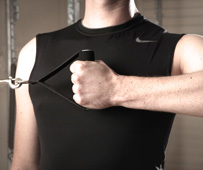
Resources
Manuals and Resources
Course repertoire and analysis of repertoire to intermediate level (all large and small apparatus and mat) supported by appropriate manuals and handout material.
- Student manual – including scope of practice for Pilates Practitioner, observation and assisted teaching guidelines and protocols, instructor/supervisor feedback processes, complaints processes.
- Full repertoire manual – for all major apparatus (reformer, chairs, Cadillac, barrels, purpose of exercises, technique, modifications and contraindications.
- Use and purpose of props and small apparatus in a studio or group class setting
Delivery arrangements must be documented and all props/apparatus must be available for course delivery hours and practice and sufficient room available for demonstration by trainer and practice by students.
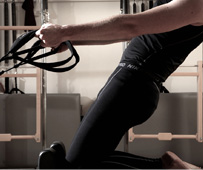
Assessment
Course assessment
Students need to demonstrate an ability to perform, program, teach and modify exercises in a variety of class settings, up to an intermediate level, (with accompanying props and small apparatus) to a wide range of body types and common musculoskeletal conditions.
Course assessment must include:
- Appropriately timed written, self-mastery and teaching assessments throughout the training.
- Minimum of one final written assessment
- Minimum of one self-mastery assessment in which student performs a range of exercises across all apparatus, to an intermediate level.
- Minimum of one teaching assessment in which student teaches a range of exercises on all apparatus and mat to an intermediate level, including the use of props and small apparatus where appropriate.
Open > PAA Course Competency Criteria for Studio Courses

Providers and faculty
Course providers and faculty
PAA approved Studio courses must cover the skills and knowledge required to program, instruct and modify a Pilates class in a studio setting (all apparatus and mat) for up to 4 clients, within national protocols and guidelines.
The course must equip graduates to teach classes in a studio environment catering to a limited general public with apparently healthy bodies and to clients with specific musculoskeletal or pathological issues and conditions. E.g., lordosis, kyphosis, head forward, LBP, neck issues/shoulder/knee issues.
- The course director or principal tutor must be a qualified and experienced teacher trainer with a minimum of 10,000 teaching hours (equivalent to a PAA Practitioner Member – Principal Trainer).
- Faculty tutors must have a minimum of 5000 teaching hours (equivalent to PAA Practitioner Member – Trainer Level 1).
- Course providers should be able to demonstrate a lineage to Joseph & Clara Pilates’ specific works.

Timeframe and hours
Course timeframe and minimum hours
- Course entry requires a pre-requisite of 25 hours of Pilates experience in any format.
- The timeframe for course delivery is a minimum of 24 weeks and a minimum of 460 course hours allocated as follows:
- Face-to-face and online delivery of theory/content – minimum of 80 hours combined.
- Work experience – minimum of 300 hours of observation and assistant teaching combined. Minimum 50% of work experience must be assistant teaching at an approved studio.
- Self-mastery – minimum of 80 hours. 50% of this needs to be classes with a comprehensively trained and qualified instructor with a minimum of 3000 teaching hours.
- Logbooks – All course hours (observation, self-mastery and work experience) to be logged by student with details of experience/exercises covered. Must be signed off by qualified instructor present.

Course Content
Course Content
The course submission must show evidence that the course delivers and facilitates the knowledge, understanding and performance (where relevant) of the following:
- History and development of the Pilates Method
- Philosophy, concepts and principles of the Pilates Method and how the mat or reformer fits within the total system of the Pilates Method.
- Knowledge, instruction and performance of Pilates repertoire on all apparatus and mat, to full Intermediate level (refer to PAA recommended repertoire list)
- Applied anatomy & physiology (refer to PAA recommended inclusions)
- Movement analysis, including basic biomechanics and a knowledge of common movement dysfunctions, postural concerns and corrections
- Knowledge of common injuries and pain syndromes e.g. joint strains and sprains, lower back pain, knee, shoulder pain
- Pre-exercise clearance of clients to determine suitability for Pilates classes. with provision of appropriate industry standard templates.
- Initial assessment process, including recording of pre-existing condition, postural assessment, identification of faulty postures and postural correction with provision of appropriate industry standard templates.
- Programming for full studio classes using all large and small apparatus as well as common props, and catering for a wide range of body types. Must include knowledge of appropriate modifications and contra-indications for common postural conditions and pain syndromes.
- Use, maintenance and safety protocols of all Pilates apparatus /props
- Workplace health and safety in a group class setting, including personal /client/colleague safety, venue restrictions and protocols, hygiene protocols, apparatus safety and maintenance.
- Understanding of PAA scope of practice for Studio Pilates instructors
- Understanding of ongoing education requirements and potential education pathways towards becoming a PAA Practitioner member.

Resources
Manuals and resources
Course repertoire and analysis of repertoire to intermediate level (all large and small apparatus and mat) supported by appropriate manuals and handout material.
- Student manual – including scope of practice for Studio Pilates, observation and assisted teaching guidelines and protocols, instructor/supervisor feedback processes, complaints processes.
- Full repertoire manual – for all major apparatus (reformer, chairs, Cadillac, barrels, purpose of exercises, technique, modifications and contraindications.
- Resources on common postural conditions, injuries, pain syndromes and pathological conditions.
- Provision of appropriate industry standard screening and initial assessment templates.
- Recommended reading lists, including history of Pilates, applied anatomy, physiology and biomechanics.
- All props/apparatus must be available for course delivery hours and practice and sufficient room available for demonstration by trainer and practice by students.

Assessment
Course assessment
Students need to demonstrate an ability to perform, program, teach and modify exercises in a variety of class settings, up to an intermediate level, (with accompanying props and small apparatus) to a wide range of body types and common musculoskeletal conditions.
Course assessment must include written, self-mastery and teaching assessments throughout the training:
- Minimum of one final written assessment.
- Minimum of one self-mastery in which student performs a range of exercises to an intermediate level.
- Minimum of one teaching assessment in which student teaches a range of exercises on all apparatus and mat to an intermediate level, including the use of props and small apparatus where appropriate.
Open > PAA Course Competency Criteria for Group Mat or Reformer Courses

Providers and faculty
Course providers and faculty
PAA approved Group instructor courses (mat or reformer) must cover the skills and knowledge required to program, instruct and modify a group Pilates class on the mat or reformer (up to 20 in a mat class and 12 in a reformer class) within national protocols and guidelines.
The course must equip graduates to teach group mat or group reformer classes in a studio environment or in a given community space or fitness facility, catering to a limited general public with apparently healthy bodies and to clients with specific musculoskeletal issues. E.g., lordosis, kyphosis, forward head, neck shoulder/knee issues.
- The course director or principal tutor must be a qualified and experienced teacher trainer with a minimum of 10,000 teaching hours (equivalent to a PAA Practitioner Member – Principal Trainer).
- Faculty tutors must have a minimum of 5000 teaching hours (equivalent to PAA Practitioner Member – Trainer Level 1).
- Course providers should be able to demonstrate a lineage to Joseph & Clara Pilates’ specific works.

Timeframe and hours
Course timeframe and minimum hours
- Course entry requires a pre-requisite of 25 hours of Pilates experience in any format.
- The timeframe for course delivery is a minimum of twelve weeks and a minimum of 175 course hours allocated as follows:
- Face-to-face and online delivery of theory/content – minimum of 50 hours combined.
- Work experience – minimum of 75 hours of observation and assistant teaching combined. Minimum 50% of work experience must be assistant teaching at an approved studio.
- Self -mastery – A minimum of 50 hours of self-mastery. 50% of these hours need to be classes with an accredited instructor.
- Logbooks – All course hours (observation, self-mastery and work experience) to be logged by student with details of experience/exercises covered. Must be signed off by instructor present.

Course Content
Course Content
The course submission must show evidence that the course delivers and facilitates the knowledge and understanding of the following:
- History and development of the Pilates Method
- Concepts of the Pilates method and how the mat OR/AND reformer fits within the total method
- Knowledge, instruction and performance of Pilates mat OR/AND reformer repertoire to at least an intermediate level (refer to PAA recommended repertoire lists)
- Basic anatomy & physiology applied to Pilates mat OR/AND reformer and small apparatus exercises
- Common mild injury types such as joint strains and sprains, lower back pain and postural imbalances
- Pre-exercise screening of clients to determine suitability for group mat/reformer classes with provision of appropriate industry standard templates
- Initial assessment, including recording of pre-existing conditions, identification of faulty postures and corrections, with provision of appropriate industry standard templates.
- Programming for group mat OR reformer classes, catering for a wide range of body types and with appropriate modifications and contra-indications for common postural conditions. E.g. lordosis, kyphosis, forward head, neck/ shoulder/knee issues.
- Knowledge and use of props and small apparatus including purpose of the prop and safety protocols
- Workplace health and safety in a group class setting, including personal /client/colleague safety, venue restrictions and protocols, hygiene protocols, apparatus safety and maintenance
- Understanding of scope of practice for PAA Group Pilates instructors
- Understanding of ongoing education requirements as a PAA member and potential education pathways towards becoming a comprehensively trained Pilates professional.

Resources
Manuals and resources
- Student manual – including course timeframe and delivery arrangements, observation and assisted teaching guidelines and protocols, assessment requirements, relevant scope of practice, instructor/supervisor feedback processes, complaints processes.
- Full repertoire manual – including description and images of all exercises, purpose of exercises, set up and technique, modifications and contraindications and the use, purpose and safety of relevant apparatus and props.
- Resources on common postural conditions, injuries, pain syndromes and pathological conditions.
- Provision of appropriate industry standard screening and initial assessment templates.
- Recommended reading lists, including history of Pilates, applied anatomy, physiology and biomechanics.
- All props and apparatus must be available for face-to-face delivery hours and self-mastery, with sufficient room available for demonstration by trainer and practice by students.

Assessment
Course assessment
Students need to demonstrate an ability to perform, program, instruct and modify mat/reformer exercises in a variety of class settings, up to an intermediate level, (with accompanying props and small apparatus) to a wide range of body types and common musculoskeletal conditions.
Course assessment must include written, self-mastery and teaching assessments:
- Minimum of one final written assessment
- Minimum of one final self-mastery in which student performs mat OR reformer exercises to an intermediate level
- Minimum of one final teaching assessment in which student teaches mat/reformer exercises to an intermediate level, including the use of props and small apparatus in a class routine
Aligning Courses to PAA Membership Levels
The PAA recognises a range of training courses offering different outcomes within the industry. These outcomes align with PAA membership levels, offering a progressive pathway toward PAA Pilates Practitioner membership with an AQF Diploma or Advanced Diploma from a PAA Professional training provider.
PAA membership is now open to graduates from:
- Group training courses (mat and reformer) that meet PAA Group course competency criteria. Graduates will be eligible for PAA group instructor membership (click here)
- Comprehensive training courses that meet PAA Studio course competency criteria. Graduates will be eligible for PAA studio instructor membership (click here)
- VET accredited training courses (minimum AQF Diploma) that meet PAA Practitioner course competency criteria. Graduates will be eligible for PAA Pilates Practitioner membership (click here)

